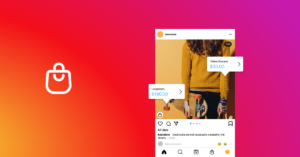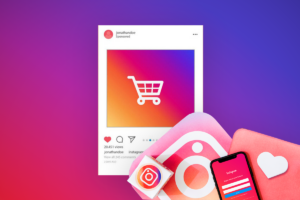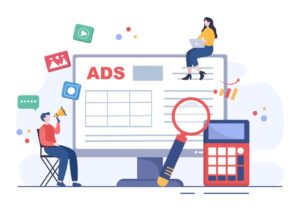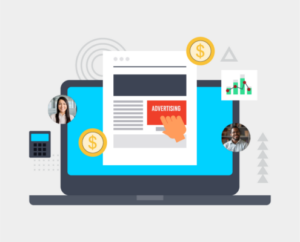Introduction
In today’s fast-paced digital world, Instagram has transformed from a photo-sharing app into a powerful eCommerce platform where brands can directly connect with customers, showcase products, and drive sales. With over a billion active users, Instagram offers businesses of all sizes an unparalleled opportunity to reach potential customers, build brand loyalty, and stand out in a competitive market. In 2025, Instagram’s evolving shopping features make it even easier to set up an online storefront, tag products in posts, and use interactive tools like Stories and Reels to create engaging shopping experiences.
But to truly succeed, brands need more than just a presence—they need a strategy tailored to Instagram’s unique environment. This guide will walk you through every step, from setting up Instagram Shopping and optimizing your profile to advanced tactics for boosting engagement and conversions. Whether you’re a new entrepreneur or an established business looking to expand on social media, these easy-to-follow tips will help you maximize your reach, engage your audience, and drive real results. By leveraging Instagram’s latest tools and staying adaptable to new trends, your eCommerce brand can make a significant impact and grow in the competitive digital marketplace of 2025.
How to Sell e-commerce products On Instagram:
 With Instagram continuously evolving as a platform for social commerce, selling eCommerce products on Instagram is more accessible and effective than ever. If you’re looking to build a strong presence on Instagram and increase sales in 2025, this guide will cover everything you need—from setting up your store to advanced tips for maximizing engagement and conversions.
With Instagram continuously evolving as a platform for social commerce, selling eCommerce products on Instagram is more accessible and effective than ever. If you’re looking to build a strong presence on Instagram and increase sales in 2025, this guide will cover everything you need—from setting up your store to advanced tips for maximizing engagement and conversions.
1. Set Up an Instagram Shop
 Instagram’s shopping features make it simple to create a storefront directly on your profile.
Instagram’s shopping features make it simple to create a storefront directly on your profile.
- Switch to a Business or Creator Account: You’ll need this account type to access Instagram’s shopping features.
- Link to Your Facebook Catalog: To set up Instagram Shopping, you’ll need to connect your account to a Facebook catalog. You can create this catalog in Facebook Business Manager or link it from an eCommerce platform like Shopify or BigCommerce.
- Submit for Review: Instagram will review your account to ensure it meets the requirements. This process typically takes a few days.
- Enable Product Tagging: Once approved, you can start tagging products in your posts and stories, making it easy for users to learn more and purchase directly from Instagram.
2. Optimize Your Profile for eCommerce
 Your Instagram profile acts as your digital storefront. Ensure it’s professional, visually appealing, and encourages conversions.
Your Instagram profile acts as your digital storefront. Ensure it’s professional, visually appealing, and encourages conversions.
- Create a Compelling Bio: Make it clear what you sell and highlight your unique selling points. Add a link to your website or direct link to your Instagram shop.
- Use a Strong Profile Picture: Ideally, this should be your logo to build brand recognition.
- Link in Bio: Use tools like Linktree or the Instagram link feature if you need to link multiple pages, such as new arrivals, bestsellers, or seasonal offers.
3. Post High-Quality Visual Content

Instagram is a visual platform, so focus on eye-catching, high-quality images and videos to showcase your products.
- Use Lifestyle Shots: Show your products in real-life situations, as this helps users envision themselves using your product.
- Carousel Posts: Showcase multiple angles, variations, or applications of your product in one post to keep users engaged.
- User-Generated Content (UGC): Encourage your customers to share photos of themselves using your product and repost them on your feed. UGC builds social proof and enhances trust.
- Behind-the-Scenes Content: Share glimpses of product creation, packaging, or other behind-the-scenes activities to add a human touch to your brand.
4. Take Advantage of Instagram Stories and Reels
 With the rise of short-form video content, using Stories and Reels can significantly boost engagement and brand awareness.
With the rise of short-form video content, using Stories and Reels can significantly boost engagement and brand awareness.
- Use Reels for Trend-Based Content: Jump on trending audio or challenges in Reels to reach a wider audience.
- Product Demos in Stories: Show products in action, whether through tutorials, how-tos, or live demonstrations.
- Add Links in Stories: If you have over 10,000 followers or use ads, add direct links in your Stories so users can swipe up to purchase.
- Highlight Collections: Use the Highlights feature to organize Stories by categories like new arrivals, sales, or customer reviews.
5. Leverage Influencer Partnerships
 Partnering with influencers helps you reach targeted audiences and build trust through a credible voice.
Partnering with influencers helps you reach targeted audiences and build trust through a credible voice.
- Identify Relevant Influencers: Look for influencers whose followers align with your target market. Nano and micro-influencers (those with 1,000-50,000 followers) often provide higher engagement rates and authentic connections.
- Offer Affiliate Deals or Discount Codes: Encourage influencers to share a unique discount code or affiliate link to drive sales.
- Create Authentic Campaigns: Allow influencers to create content that resonates with their followers while authentically showcasing your product.
6. Use Ads to Boost Reach and Conversions
 Instagram Ads can increase visibility and drive sales, especially if you’re targeting a specific audience.
Instagram Ads can increase visibility and drive sales, especially if you’re targeting a specific audience.
- Sponsored Posts: Promote your top-performing posts to reach more users.
- Targeted Ads: Use Instagram’s detailed ad targeting to reach audiences based on demographics, interests, behaviors, and even lookalike audiences.
- Shoppable Ads: Utilize Shoppable Ads to allow users to view product details and make purchases directly from the ad.
7. Engage and Build a Community
 Building a loyal following requires active engagement. The more you interact with your audience, the more likely they are to buy from you.
Building a loyal following requires active engagement. The more you interact with your audience, the more likely they are to buy from you.
- Respond to Comments and DMs Promptly: Whether it’s a question about a product or a comment on a post, quick responses show you value your customers.
- Host Giveaways or Contests: Contests that require users to tag friends or share your post help to boost reach and attract new followers.
- Ask Questions and Polls in Stories: These encourage followers to interact with your content, keeping them engaged with your brand.
8. Track Analytics and Refine Your Strategy
 Monitoring your performance allows you to understand what’s working and where to improve.
Monitoring your performance allows you to understand what’s working and where to improve.
- Use Instagram Insights: Track metrics like reach, impressions, website clicks, and profile visits to gauge your audience’s engagement.
- Analyze Shopping Insights: For those with Instagram Shopping, insights provide data on product clicks, taps, and sales.
- A/B Test Different Content Types: Experiment with various formats—like Reels versus image posts—to see what resonates best with your audience.
9. Leverage New 2025 Features
 Instagram is always evolving with new tools to boost sales and engagement. Keep an eye out for updates like:
Instagram is always evolving with new tools to boost sales and engagement. Keep an eye out for updates like:
- Enhanced AR Shopping Features: Augmented Reality (AR) features are increasingly popular, allowing users to virtually try products, like makeup or home decor items, before purchasing.
- AI-Powered Product Recommendations: AI-driven tools can help Instagram suggest your products to users more likely to buy.
- Improved Messaging Tools: Many brands are leveraging automated messaging for customer service, allowing for faster response times.
Final Thoughts
Selling eCommerce products on Instagram in 2025 presents an excellent opportunity for businesses to reach a wide audience and build a brand presence. With Instagram’s continuous updates and features focused on improving the shopping experience, businesses can seamlessly engage customers through content, interactive stories, influencer partnerships, and targeted ads. By optimizing your Instagram profile, sharing high-quality visuals, and leveraging tools like Instagram Shopping, Stories, and Reels, you can transform your Instagram page into a powerful sales channel.
If you’re looking to amplify your online selling efforts and need professional guidance, web development company like Chennai Web Development Company can be a great partner. They specialize in building user-friendly eCommerce websites that integrate seamlessly with Instagram and other social media platforms, allowing for a unified and smooth shopping experience. Their expertise in eCommerce design, payment integrations, and analytics can further empower your brand to reach and convert your target audience effectively. With the right partner, you can maximize your eCommerce potential on Instagram and beyond, driving higher conversions and long-term success.
Incorporating strategies like these with the support of professionals will make your brand ready to thrive on Instagram and scale your online sales in the years ahead.
FAQs about How to Sell e-commerce products On Instagram:
1. Do I need a website to sell products on Instagram?
Not necessarily. Instagram Shopping allows you to sell products directly through the app by linking to your Facebook catalog. However, having a website can help build credibility and offer an alternative way for customers to browse and shop.
2. What are the requirements to set up Instagram Shopping?
To set up Instagram Shopping, you need a business or creator account, an active Facebook catalog, and you must sell physical goods that comply with Instagram’s policies. Your account will also go through a review process before shopping features are enabled.
3. Can I sell digital products on Instagram?
Instagram Shopping primarily supports physical products, but many brands promote digital products by linking to external websites in the bio or using platforms like Linktree. Alternatively, you can use posts and Stories to promote digital products and direct followers to your website.
4. How do I drive traffic to my Instagram Shop?
Use high-quality images, engage with followers, leverage Instagram Stories and Reels, run targeted ads, and consider collaborations with influencers to reach new audiences. Actively posting content and responding to comments also boosts visibility.
5. How can I track sales and performance on Instagram?
Instagram Insights provides valuable data on post engagement, reach, and impressions. With Instagram Shopping, you can view product-specific insights like clicks and purchases. Regularly reviewing these metrics helps refine your strategy for better results.
- How to Choose the Best Web Development Company in Chennai? - February 25, 2025
- How to Sell Profitably on Online Marketplaces in India - January 31, 2025
- Building a Digital Transformation Strategy: Key Steps for Success - November 11, 2024